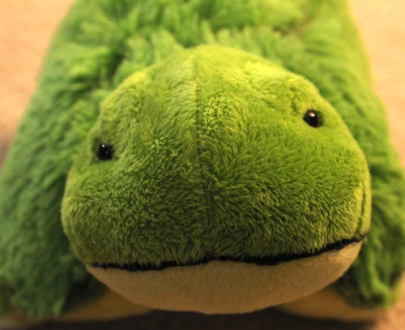
The "turtle technique" is a method for calming down when you feel angry, frustrated or upset. It has been found to be effective for both children and adults.[1]
Use a turtle puppet (or any similar plush toy) to help teach children how to use the turtle technique to calm down. Introduce the turtle puppet to the children. Have the children come up with a name for the turtle. The turtle can bring up an example of a time he got really upset or angry. Have the turtle ask the children if they have ever felt this way. Then the turtle can explain that he has a special way to calm down when he feels angry, called the turtle technique.
Have the turtle introduce the basic steps of the turtle technique:
1. Recognize that you feel angry.
2. Think “Stop” to yourself.
3. Go into your “shell”. Take three deep breaths and think calming thoughts, such as: “I can calm down,” “I am OK”, “I can think of solutions to my problem,” “I am good at solving problems.” Children can also think about relaxing your body one body part at a time.
4. Come out of your shell when calm and ready to think of solutions to the problem.
Brainstorm with children on how they could pretend they have a shell to go into to calm down.
Follow-up Activities:
- In the classroom: suggest having a special place in the classroom that is our “shell”, where we can go to calm down. Set up a Turtle Time space in the classroom, where children can go to take a break and calm down.
- Give children opportunities to practice using turtle time through role plays.
- Find and read stories such as:
- When Sophie Gets Angry, Really, Really Angry by Molly Bang (1999)
- How do Dinosaurs Say I'm Mad by Jane Yolen (2013)
- Mouse Was Mad by Linda Urban (2009)
- When you notice children becoming upset, remind them about Turtle Time. You can give them the turtle puppet as a reminder and work through the turtle technique steps with them.
A preliminary investigation of the Turtle Technique, a procedure for helping emotionally disturbed children control their own impulsive behavior, is described. The technique consists of four components: the “turtle response,” relaxation, problem-solving, and peer support. Eleven children drawn from two classrooms were instructed in the use of the Turtle Technique for the self-control of aggression.